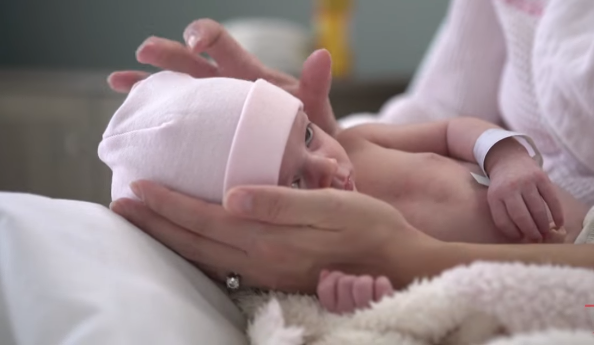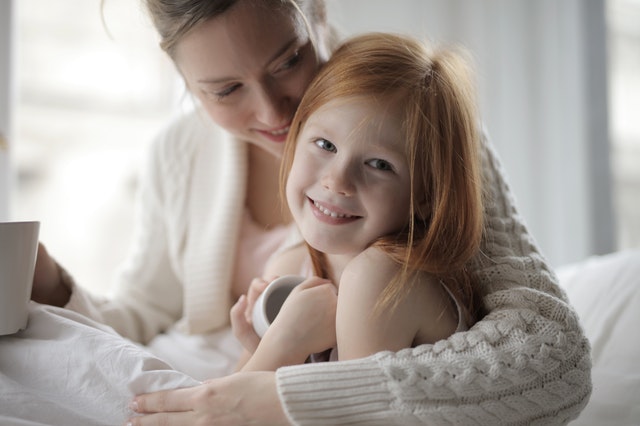Does your baby have a fever? Do not panic. Fever in babies is usually harmless and often goes away on its own. We tell you what to do if your baby has a temperature and when to warn your doctor.
What is a fever?
A baby's average body temperature fluctuates between 36.5 and 37.5 degrees. Your baby has a fever if his or her body temperature is above 38 degrees. Fever usually means that the immune system is fighting a pathogen. The flu virus and the common cold viruses are the best-known examples of this. By increasing the body temperature, bacteria and viruses can be more easily rendered harmless. Your little one can also get a fever after a vaccination. This is normal and is, therefore, nothing to worry about.
- Does your baby have a fever, and are you worried? Do not hesitate and consult your doctor.
- Do you suspect that the coronavirus causes your baby's symptoms? Then contact your doctor by telephone.
- For the most up-to-date and reliable information about the coronavirus.
Symptoms of fever in babies
Most parents recognize a fever in their child because the child feels warmer than usual. Experienced parents can sometimes estimate the temperature of their child quite well just by feeling it. If the fever rises quickly, your baby may shiver. He or she is freezing and the skin looks pale.
The opposite often happens when the fever drops. Your little one is warm and sweats. These signs of temperature change are harmless and arise because the body's thermostat anticipates the actual temperature, as it were.
How your baby reacts to the fever says more about the severity of the disease than the exact temperature itself. As long as your baby drinks enough and reacts normally, there is no immediate cause for concern. Also hanginess and a lot of sleep is normal in children with a fever. If in doubt, always contact your doctor.
 Measure body temperature
Measure body temperature
With a baby you can feel on the forehead, neck and feet whether your little one is (too) warm. Are you unsure if your baby has a fever? Then measure his or her body temperature with a thermometer. It is best to do this rectally. The anus is the most reliable measuring point. Tip: apply a small amount of Vaseline to the end of the thermometer to make it easier to insert the thermometer and make the measurement a little less unpleasant. You don't have to measure every hour: morning and evening is enough. In children, the fever can also quickly rise to over 40 degrees Celsius.
It is important that the thermometer be given enough time to measure body temperature. Therefore, always read the instructions for use for the correct instructions.
Please note: ear thermometers are not suitable for babies under three months old. Moreover, this gives a less reliable result.
Is fever in babies dangerous?
No, usually fever in babies is not dangerous. It is a sign that there is an infection somewhere in the body, which is now being fought. So it is a meaningful response from the body. If your little one can use the heat well (so not too many blankets and not warm packing / dressing!), The temperature will in principle not exceed 41.7 degrees Celsius.
Still, you should keep a close eye on your baby's fever. Is your baby under three months old and does he or she have a fever? Then immediately notify your doctor.
What to do in case of fever?
Does your baby have a fever? Do not panic. Fever is usually harmless and often goes away on its own. What to do if your little one has a fever:
Give your baby extra water.
Due to the high body temperature, your baby loses more fluid than usual, especially if there is also spitting or diarrhea. That's why it's important to give your little one a little more water to avoid dehydration. You can also offer your baby drinks between normal feeding times. Ice lollies, which mainly consist of water, are often appreciated by sick children and supplement the moisture content well. Always check for signs of dehydration: For example, a dry diaper can be a sign of dehydration.
Keep your baby cool.
Don't dress your little one too thickly and put him or her under a thin sheet. This way your baby's body can lose the heat well.
Let your child rest a lot.
Children with a fever need a lot of rest. Is your child a little older? Then let him or her walk around in pajamas and provide some distraction through a book or a game.
If your child spits a lot or has diarrhea, you can give oral rehydration fluid (ORS). These are sachets of powder that you can buy at the drugstore and that you dissolve in water. The solution contains glucose and salt. This can help combat any dehydration. Always read the package insert to determine the correct dosage for your little one. Junior variants are available for very young children.
Fever is a meaningful response from the body to an infection. In most cases, the doctor will advise not to treat the fever. In very small children and with a fever above 40 degrees Celsius, the doctor can prescribe paracetamol.
The dose of paracetamol depends on the age of your child and the form of administration. Always read the package leaflet for this or ask your doctor or pharmacist for advice. Paracetamol can be given as a pill, drink or suppository. When giving a suppository, always make sure to push the thick side of the suppository into the anus first. Petroleum jelly can help ease insertion and make it less unpleasant.
